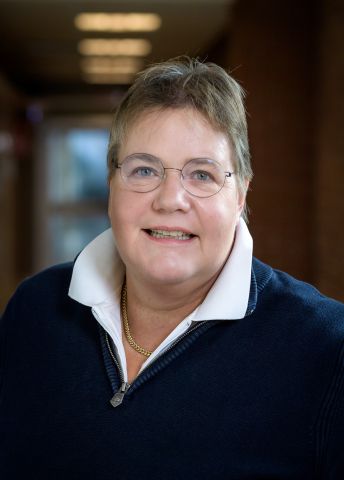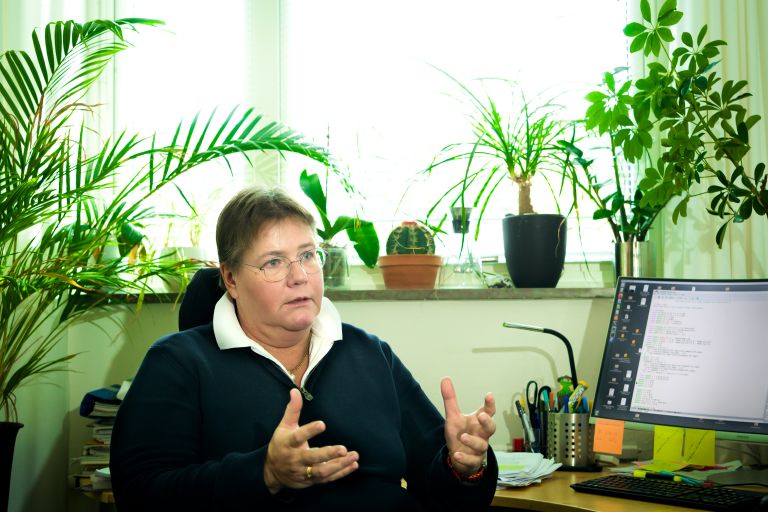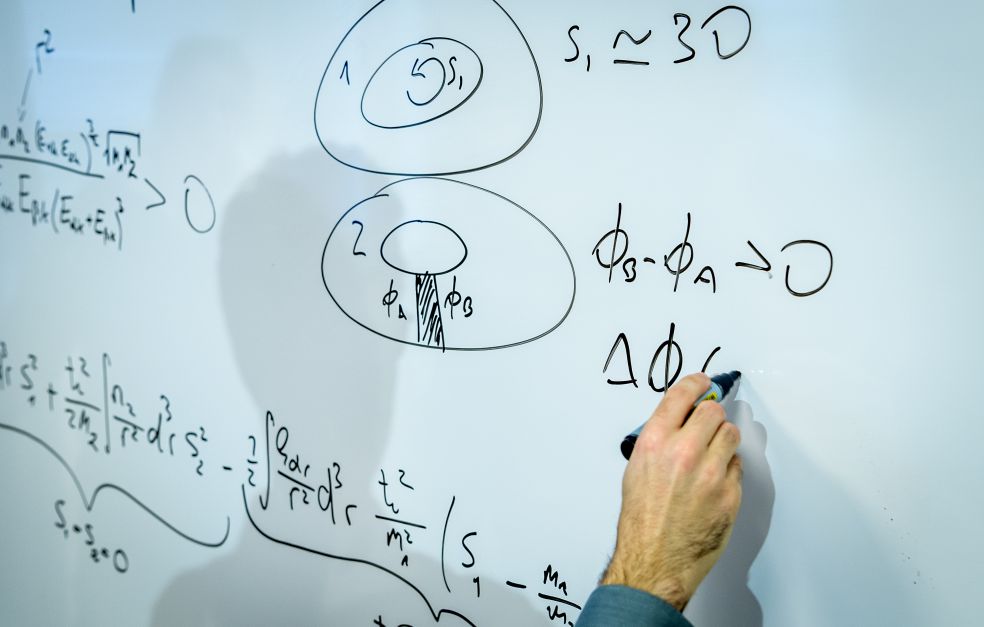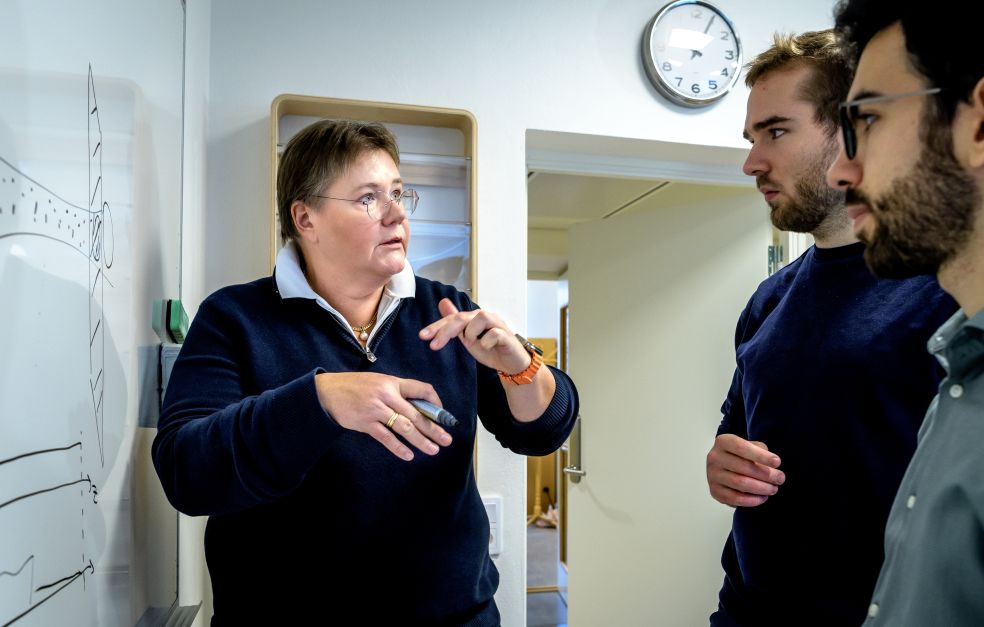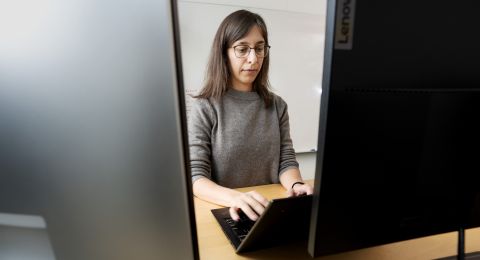With modern quantum optics technology, atoms can be placed in states where they possess new physical properties. Wallenberg Scholar Stephanie Reimann is exploring the theory behind the physics – and predicting phenomena that are up to experimental proof.
Stephanie Reimann
Professor of Mathematical Physics
Wallenberg Scholar
Institution:
Lund University
Research field:
Bose-Einstein condensate, nanostructured quantum systems, many-body physics
At first it was just a hypothesis. Then researchers managed to prove it: when certain atoms are cooled to extremely low temperatures, a new type of matter is created. The cooled atoms may form what is called a Bose-Einstein condensate, which can acquire properties that could never be seen at higher temperatures. One example is superfluidity, where the material flows without resistance. Another one is the formation of ultra-cold “droplets” that may self-bind due to pure quantum-mechanical effects.
Reimann, who is a professor of mathematical physics at Lund University, is exploring these phenomena with the help of quantum theoretical methods. This also gives her the opportunity to test quantum theories in practice. She is about to take the next step – to the analysis of superfluids with a structure resembling that of solids. They are known as supersolids.
“We realized that if self-bound droplets of highly magnetic atoms are placed in a rotating ring structure, the droplets may coherently overlap, forming a superfluid that covers the whole structure. The atoms are captured in a state where they retain the properties associated with superfluidity, but where they nevertheless begin to behave like a solid,” says Reimann.
The computations made by her team were inspired by experiments conducted by researchers at the universities in Stuttgart, Innsbruck and Florence, finding this new supersolid state in atoms of the highly magnetic elements dysprosium and erbium. Reimann and her colleagues are now interested in helping design experiments to further explore its properties.
Leading the way to sensitive measurements
Reimann describes how recent advances in quantum optics make it possible for researchers in her field to constantly form new ideas.
“It is so inspiring to work close to the experimentalists – it is simply fantastic what they can do. Supersolidity is a completely new state that we have not seen before, quite different from the solid materials of classical physics. These systems behave like magnets but with quantum features, and we expect them to exhibit many new properties,” says Reimann.
This is a new type of quantum matter. We need to understand its properties and how we can make use of them.
The new phenomena may have future uses in quantum sensors, which are a kind of measuring tool. There are already such tools stemming from the field of superconductivity, called Squids, which can measure magnetic fields. They are extremely sensitive; among other things they can detect weak magnetic activity in the brain and the heart. The phenomenon that Reimann is exploring could instead be used in gyro- and accelerometers, measuring rotation, movement or tilt.
Reimann herself is not involved in technical applications or experiments; her specialty is the theory and computations. Presently, she is using numerical methods to ascertain what happens to a superfluid or supersolid if the material is for example shaken, stirred, or placed under pressure.
Searching for the boundary between few and many atoms
She also works on what is known as “few- to many-body problems” in quantum physics. This is a question of how small the number of particles needs to be for a given quantum phase to occur. When a system becomes smaller or larger, its properties change. Some new ones arise; others disappear.
“My work is about getting a grip on quantum theory in many-body systems per se. At present, physics hardly even has a language to describe accurately what happens when interactions are very strong, and the number of quantum particles very large.”
Exactly where the boundaries go between few- and many-body systems is one of the principal problems in Reimann’s research field. In systems with few atoms, she can use exact numerical methods. In large systems this would entail impossible giant computations. Instead, she is obliged to make radical simplifications and cannot be sure that the theory accurately reflects results. She is therefore working with a research team at the University of Heidelberg to locate the boundaries between the systems.
“The researchers in Heidelberg are pioneers in the field of experimental few-body systems. They have found ways to measure the exact number of atoms in the systems and determine their state. We can use this in an effort to understand how superfluidity and superconductivity are established on the way from a small number of atoms to large systems. This experimental data enables us to take the next step in the theory. It’s really exciting!”
Happiest immersed in research
There was a time when Reimann dreamt of becoming a cellist, and she still plays. But in the end she chose to pursue a career in research. She received her PhD in Regensburg in Germany, followed by two periods as a postdoc, first in Copenhagen, then in the Finnish city of Jyväskylä. She has been based in Lund since 2000. As a professor and senior researcher, she needs to spend more time on administration than ever before, but she devotes as much time as she can to the research itself.
“I’m happiest when I’m working closely with members of my team – when we share ideas, computations, creativity, and exhilaration when everything falls into place. I give my younger colleagues a great deal of freedom. That may involve risks, but they will be better researchers for it. I enjoy watching them grow.”
Text Lisa Kirsebom
Translation Maxwell Arding
Photo Kennet Ruona
